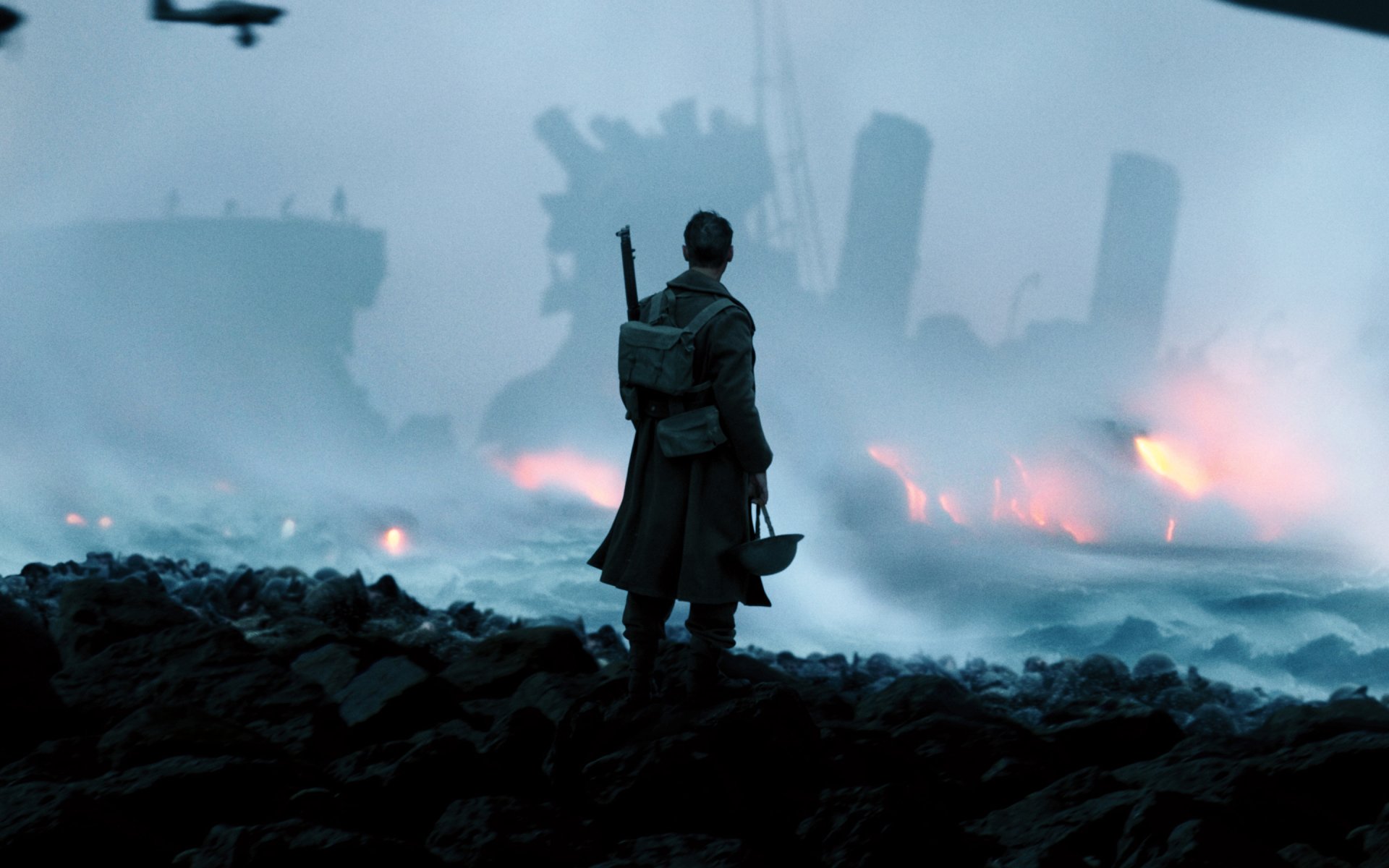Dunkirk is, quite simply, the most astonishingly immersive war picture ever made. Does that make it the best? In a feat of visual storytelling that will not be equaled in a movie this year, co-writer and director Christopher Nolan creates a symphony of images, sound and fury onscreen, recreating an early WWII episode of heroism and survival with the unmistakable eye, ear and artistry of one of the great filmmakers. You may not care about anyone onscreen but you will not mistake the genius of its creator, evident in every frame.
An account of an event better known to England than Stateside, the picture charts the an important early World War II episode that, had it gone any other way, might have significantly changed world history. In early 1940 in the tiny coastal French town on Dunkirk, both British and French armies were outmatched by Germans and forced to retreat, unprotected, to the seaside.
An estimated 400,00 British soldiers were forced to the French coast, desperately wanting passage to England and safety, options for which were very thin—many ships had been lost and the waters were teeming with German subs, the skies filled with German bombers and chances of survival dim.
In the picture’s opener, a young survivor named Tommy (Fionn Whitehead) evades German fire long enough to get through Dunkirk and to the beach where he craftily manages to transport a wounded comrade to a rescue ship. But when he’s rejected entry, he begins an odyssey of survival that is nightmarish, visceral and unrelenting (imagine the full-throttle intensity of the battles scenes in Mel Gibson’s Hacksaw Ridge, or the opener of Spielberg’s Saving Private Ryan for 105 disorienting minutes).
Edited with ingenuity and propulsion by Lee Smith, Dunkirk is a roundelay of air, sea and land action, and in signature Nolan style, conflates the events with a twisty time structure that allows the action set-pieces to feel as if everything is happening concurrently while maintaining separate timekeeping between, for example, Tom Hardy as a crack Spitfire pilot locked and loaded on the German bombers and more time intensive rescue events on water. His face covered for nearly the entire film, Hardy nevertheless projects stoic daring even when his plane can’t quite live up to its pilot’s herculean task.
In the water is a solid Mark Rylance as a former soldier and civilian who takes to the channel with his young son (Tom Glynn-Carney) and the boy’s mate (Barry Keogan), lifejackets in tow and pulling soldiers from the water. One of whom, well-played by a shell-shocked Cillian Murphy, makes an unfortunate and reckless decision upon his rescue. At some point, One Direction alum Harry Styles shows up and delivers a surprisingly fine turn as another young soldier in peril, getting a key moment in the film’s denouement.
On the beach is Kenneth Branagh as the general overseeing the well-being of thousands of desperate men crowding a long, narrow dock—the only way rescue ships could get close enough to shore in the shallows of the rough seas. Branagh, more than anyone in the film, conveys the whole of the film’s themes of heroism, protection and survival, never more than in a marvelous long take observance of a key development late in the picture.
Lensed in IMAX 70mm and with shifting aspect ratios, the intensity of Nolan’s vision is owed in significant part to his longtime technical collaborators, cinematographer Hoyte van Hoytema and composer Hans Zimmer, whose music here is perhaps the most developed character in the piece and propels the movie to some very dark places.
Dunkirk, which is probably Nolan’s most “accomplished” picture, takes a calculated narrative risk by deliberately eschewing character development and emotional investment. Consequently, the picture lacks the gravitas of lesser pictures that, in the final analysis, have more emotional resonance. Nolan has sometimes been compared to Stanley Kubrick—like the master, he is a brand unto himself whose pictures are narrative puzzles that often keep the audience in cool, ironic detachment.
Nolan has yet to prove that despite his cinematic acumen he can write and direct characters we care about. Occasionally, with the heavy lifting of gifted actors like Jessica Chastain, Matthew McConaughey and Michael Caine, the emotions punch through his Escher-esque head trips, such as Chastain and McConaughey’s memorable Interstellar revelation scene and Caine’s bittersweet paternal feelings in The Dark Knight Rises. But typically, his pictures are sophistication, technique and tone in search of human experience. Or not.
Most will surely say no matter. By the time Dunkirk reaches its stirring final scenes, including a miraculous beach plane landing, Nolan has picked us up, shaken us and reminded us that, more than anything, in a world of generic tradesmen who call themselves movie directors, he is an unparalleled artist who has mastered the whole of cinema’s formal elements—a camera, sound, music, editing—to deliver us to another time and place.
3 1/2 stars.



